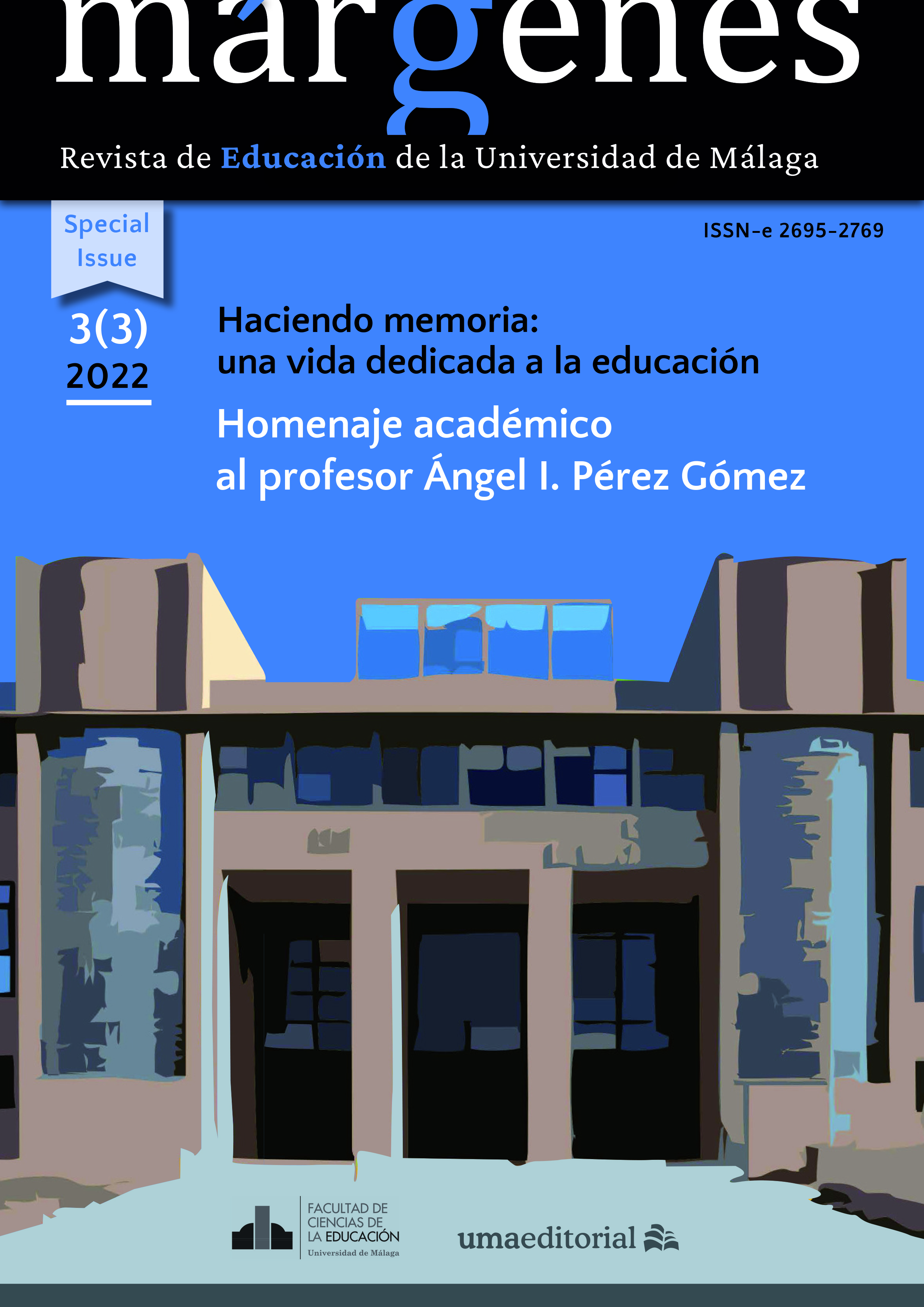Innovating with meaning, the challenge of educational transformation: some key elements. A multi-case study
Main Article Content
Abstract
Educational innovation is in vogue, but not all proposals are the same. There are many trends with different objectives. Some only change the surface and little else. But there are examples of global renewal in which the educational community participates. And they are not utopian, they are realistic and exist all around us. Our study focuses on three committed schools that live change as a shared process with characteristics and results that can be inspiring for other initiatives.
Keywords:
Downloads
Metrics
Article Details
References
Blackshields, D. (2015). Integrative learning: International research and practice. Routledge.
Bryk, A. S., Sebring, P. B., Allensworth, E., Luppescu, S., & Easton, J. Q. (2010). Organizing schools for improvement: Lessons from Chicago. The University of Chicago Press.
Copland, M. A. (2003) Leadership of inquiry: building and sustaining capacity for school improvement. Educational Evaluation and Policy Analysis, 25(4), 375–395. https://doi.org/10.3102/01623737025004375
Elder?Vass, D. (2008). Integrating institutional, relational, and embodied structure: An emergentist perspective. British Journal of Sociology, 59 (2), 281 299. https://doi.org/10.1111/j.1468-4446.2008.00194.x
Feito, R., Rujas, J., & Sánchez-Rojo, A. (2021). Jornadas de puertas abiertas: La presentación de los centros educativos en sociedad. Archivos Analíticos de Políticas Educativas, 29(86). https://doi.org/10.14507/epaa.29.6117
Feu, J. & Torrent, A. (2021). Renovación pedagógica, innovación y cambio en educación: de qué estamos hablando. En J. Feu y J.M. Palaudárias (coords.), La renovación pedagógica en España. Una mirada crítica y actual (pp. 19-54). Morata.
Fix, G.M., Rikkerink, M., Pieters, J.M. y Kuiper, W. (2021). Learning within sustainable educational innovation: An analysis of teachers’ perceptions and leadership practice. Journal of Educational Change, 22, 131–145. https://doi.org/10.1007/s10833-020-09410-2
Hill, K. L, Desimone, L., Wolford, T. et al. (2022). Inside school turnaround: what drives succes? Journal of Educational Change. https://doi.org/10.1007/s10833-022-09450-w
Hübner, N., Wagner, W., Hochweber, J., Neumann, M., & Nagengast, B. (2020). Comparing apples and oranges: Curricular intensification reforms can change the meaning of students’ grades! Journal of Educational Psychology, 112(1), 204–220. https://doi.org/10.1037/edu0000351
Haapaniemi, H.; Venäläinen, S.; Malin A. & Palojoki, P. (2021). Teacher autonomy and collaboration as part of integrative teaching – Reflections on the curriculum approach in Finland. Journal of Curriculum Studies, 53(4), 546-562, https://doi.org/10.1080/00220272.2020.1759145
Klette, K. (2009). Challenges in strategies for complexity reduction in video studies. Experiences from the PISA+ study: A video study of teaching and learning in Norway. In T. Janík & T. Seidel (Eds.), The Power of video studies in investigating teaching and learning in the classroom (pp 61-82). Waxmann.
Monanero, M. (2019). Métodos pedagógicos emergentes para un nuevo siglo ¿Qué hay realmente de innovación?. Teoría de la Educación, 31 (1), 5-34. https://doi.org/10.14201/teri.19758
Pérez Gómez, Á. I. (2004). La cultura escolar en la sociedad neoliberal. Morata.
Pérez Gómez, Á.I. (2012). Educarse en la era digital. Morata.
Pérez Gómez, Á. I. y Soriano, E. (2021). Lesson Study. Aprender a enseñar para enseñar a aprender. Morata.
Pozuelos, F. J., Romero, D., García, F. J. y Morcillo, V. (2010). No basta con soñar otra escuela, hay que hacerla. Investigación en la Escuela, 70, 5-20. https://doi.org/10.12795/IE.2010.i70.01
Pozuelos Estrada, F. J., & García Prieto, F. J. (2020). Currículum integrado: estrategias para la práctica. Investigación en la Escuela, (100), 37–54. Doi: https://dx.doi.org/10.12795/IE.2020.i100.04
Sánchez Gómez, P. J. (2022). La reacción educativa. El País. https://bit.ly/3NY6NXj
Sarason, S. (2003). El predecible fracaso de la reforma educativa. Octaedro.
Simons, H. (2011). El estudio de caso: teoría y práctica. Morata.
Sivesind, K., Afsar, A., & Bachmann, K. E. (2016). Transnational policy transfer over three curriculum reforms in Finland: The constructions of conditional and purposive programs (1994–2016). European Educational Research Journal, 15(3), 345–365. https://doi.org/10.1177/1474904116648175
Sørensen, E. & Torfing, J. (2011). Enhancing collaborative innovationin the public sector. Administration and Society, 43(8), 842- 868.
Stake, R. (2006). Multiple Case Study Analysis. Guilford Press.
Timperley, H. S. (2005). Distributed leadership: developing theory from practice. Journal of Curriculum Studies, 37(4), 395-420. https://doi.org/10.1080/00220270500038545
Trillas, J. (2018). La moda reaccionaria en educación. Laertes.
Trujillo, F. (2019). ¿Cómo son los colegios más innovadores de España? The Conversation. https://bit.ly/3NmVE1J
Vázquez Recio, R., Picazo Gutiérrez, M., & López-Gil, M. (2021). Estudio de casos e innovación educativa: un encuentro hacia la mejora educativa. Investigación en La Escuela, 105, 1-10. Doi: https://doi.org/10.12795/IE.2021.i105.01
Wallace, W. & Priestley, M. (2011). Teacher beliefs and the mediation of curriculum innovation in Scotland: A socio?cultural perspective on professional development and change. Journal of Curriculum Studies, 43(3), 357-381, https://doi.org/10.1080/00220272.2011.563447





